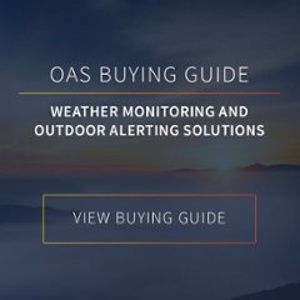What is Lightning Suppressor Technology?
- Sep 29, 2019

Severe weather is a costly problem in the United States. In 2017 alone, there were 17 billion-dollar weather and climate disasters around the country. Not only are these weather events costly, but they are dangerous as well. A majority of these disasters also involved lightning.
Lightning is a very dangerous severe weather event and is present during thunderstorms, tornadoes, hurricanes, and hail storms. Lightning can cause major power outages, damage infrastructure, and even kill. Around 50 people in the U.S. die every year as a result of lightning strikes every year.
Most businesses and government agencies in this country realize the importance of protecting their operations, finances, and people from severe weather like lightning. However, there are some solutions available in the market today that simply do not work correctly. Keep reading to find out about lightning suppressor technology and why it is not the leading method for severe weather risk management.
What is a Lightning Suppressor?

Firstly, a lightning suppressor is a lot different from a lightning rod. A lightning suppressor is supposed to keep lightning from striking while a lightning rod actually attracts the lightning strike.
These devices claim to stop lightning strikes by controlling things like the tension and polarity of the charges in the air and surrounding structures. Basically, lightning suppressors claim that their devices stop lightning strikes from occurring in a certain area.
Why They Don’t Work

Researchers at NMT did a study investigating the best shape for a grounding rod, or something that attracts lightning. What they found is that round rods are better at attracting lightning than pointy rods. Since lightning suppressors are typically round, their shape is optimized for the opposite use.
Even if these devices do suppress lightning, their effective area would be extremely small. Approximate estimates of the effective radius of a lightning rod is h/3, where h is the height of the rod. So even if it were mounted on a tall tower, it would only cover a radius of one third of its height. Since a lot of lightning suppressor manufacturers claim these devices cover 100m, these devices would have to be placed on a structure at least 300m tall.
The Bottom Line

When it comes to something as important as severe weather safety, you must rely on tried and trusted protection methods. Lightning suppressor technology simply doesn’t make the cut. There is no research supporting that these devices work and they could give your business or organization a false sense of security.
There are other options out there for lightning safety, but they aren’t all created equal. Some companies still market lightning prediction as a viable option for severe weather safety, but we’ve found that these systems are temperamental. We’ve had plenty of customers switch from lightning prediction systems after dealing with problems like false alarms, missed alarms, and faulty equipment.
Lightning detection is the best way to monitor storms and send out timely warnings. Not all lightning detection is created equal. A lot of devices on the market today only monitor cloud-to-ground lightning. We recommend total lightning detection because it includes in-cloud lightning as well. In-cloud lightning makes up nearly 80% of all lightning discharges. While these strikes aren’t immediately dangerous to operations or people on the ground, they are a great warning sign of dangerous cloud-to-ground strikes, hail, and other forms of severe weather.
Choosing a Lightning Safety System
Choosing a lightning safety system is not an easy decision. Organizations should do a lot of research and compare different methods, companies, and lightning networks. If you’re ready to start researching, download our free Outdoor Alerting System Buying Guide so you know what to look for and what questions to ask potential safety partners.







